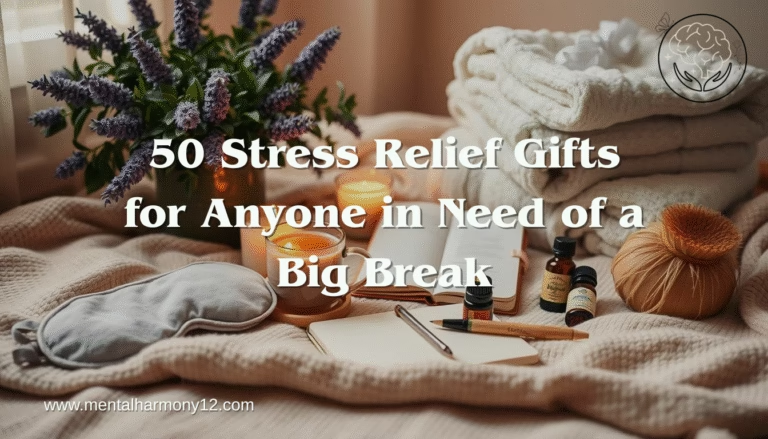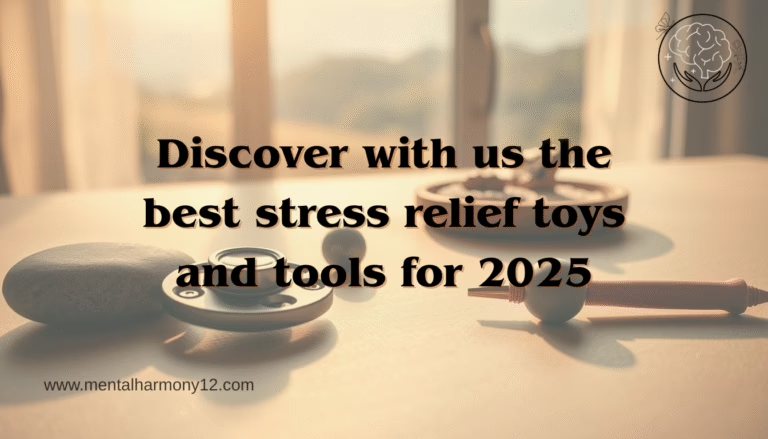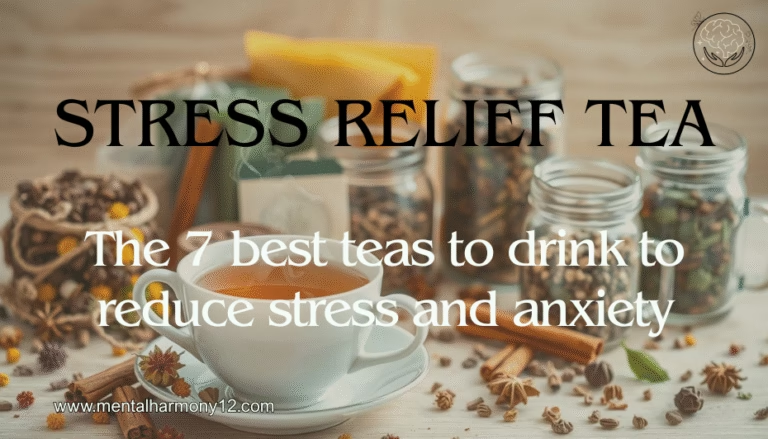Propranolol for anxiety: What to know
When Anxiety Hijacks Your Calm: Could Propranolol Be the Solution You’ve Been Looking For?
You’re standing just outside the door, seconds away from stepping into a high-pressure situation: a presentation, a job interview, or even a social event. On the outside, you try to hold it together, but inside, your heart is pounding like a drum, your hands won’t stop shaking, and your mind is racing with doubt. You’ve practiced, prepared, and done everything right, but anxiety doesn’t seem to care. It arrives uninvited, gripping your body and stealing your focus.
If this sounds all too familiar, you’re not alone. Millions of people experience this kind of intense, situational anxiety. And if you’ve been researching solutions, chances are you’ve stumbled across a name that keeps coming up: propranolol for anxiety. But what exactly is it? Does it work? How fast can you expect to feel relief? And perhaps most importantly, when should you take it to make sure it helps, not hinders you?.
What is the maximum dose of propranolol for anxiety?
Table of Contents
This isn’t just another surface-level overview. This guide is your practical companion to understanding how propranolol, a medication originally used to treat heart conditions, has become a go-to option for managing the physical symptoms of anxiety. You’ll discover how quickly it starts to work, how long the effects last, the ideal time to take it before a stressful event, and the real-life experiences of those who’ve used it. Whether you’re considering propranolol for the first time or looking to use it more effectively, this in-depth guide will give you the clarity and confidence you need.
What Is Propranolol and How Does It Help with Anxiety?
If you’ve ever searched for fast-acting solutions to manage anxiety, especially the kind that shows up during high-stress moments, you’ve likely come across propranolol. But what is it, and how exactly does it work?
Propranolol is a beta-blocker, originally developed to treat cardiovascular conditions like high blood pressure, irregular heartbeat, and chest pain. According to trusted sources like the Mayo Clinic and WebMD, propranolol works by blocking the effects of adrenaline on your body. This means it slows your heart rate, reduces blood pressure, and minimizes the physical reactions associated with stress.
But here’s where it gets interesting: while propranolol isn’t technically an anti-anxiety medication, it’s widely used off-label, especially for performance anxiety or other situational anxiety triggers. That means doctors prescribe it outside its original FDA-approved purpose. And while the FDA hasn’t officially approved propranolol for anxiety, many psychiatrists and medical professionals still recommend it as a short-term aid for managing anxiety symptoms, particularly the physical symptoms like:
- Racing heartbeat
- Shaky hands
- Sweaty palms
- Shortness of breath
It’s important to understand that propranolol doesn’t target the emotional or psychological root of anxiety. Instead, it gives you control over the physical sensations that can spiral into full-blown panic. That’s why it’s most often used before anxiety-inducing events, such as public speaking, performing, job interviews, or social situations, rather than as a daily treatment for generalized anxiety disorder.
As psychiatrist Dr. Ellen Vora puts it: “Propranolol can be incredibly effective for moments when you know anxiety is likely to strike, especially when your body betrays you with visible symptoms. It takes the edge off, so your mind can stay focused.”
In short, propranolol for anxiety isn’t about numbing your emotions; it’s about giving your body a fighting chance to stay calm, so your confidence can take the lead.
How Quickly Does Propranolol Work for Anxiety?
When you’re facing a high-stakes moment and anxiety starts creeping in, timing becomes everything. One of the main reasons people turn to propranolol for anxiety is its reputation for fast-acting relief, but how fast is “fast”?
In most cases, propranolol begins to take effect within 30 minutes to an hour after you take it. That’s why many healthcare providers recommend using it shortly before an anxiety-inducing event, like a speech, a big presentation, or even a first date. The goal is to time it just right so that the medication peaks when your anxiety typically does.
However, several factors can influence how quickly propranolol starts working for you, including:
- Dosage – Lower doses (e.g., 10–20mg) are often enough for performance anxiety but may have a quicker or shorter effect compared to higher doses.
- Form of the medication – Immediate-release tablets act faster, while extended-release versions take longer but last throughout the day.
- Your metabolism and body weight – Everyone processes medications differently, so your response time may vary slightly.
To help you visualize this better, here’s a quick breakdown:
| Dosage Form | Onset Time | Duration | Ideal Use Case |
|---|---|---|---|
| Immediate-release | 30–60 mins | 4–6 hours | Public speaking, interviews |
| Extended-release | 1–2 hours | 12–24 hours | Chronic or ongoing anxiety |
Fast Relief vs. Long-Term Anxiety Support
It’s important to note that propranolol isn’t meant to replace long-term anxiety treatments like therapy or lifestyle changes. Instead, think of it as a targeted tool in your mental wellness kit, one that helps you regain control in the moment. Whether it’s calming your nerves before walking on stage or helping you stay steady during a job interview, propranolol can offer the short-term support your body needs while your mind stays clear and focused.
What’s the Best Time to Take Propranolol for Anxiety?
When anxiety strikes at specific moments like before a big presentation or a nerve-wracking social event, timing your propranolol dose can make all the difference. Taking it too early or too late might blunt its benefits, so it’s important to understand how this medication works in your body.
Ideal Timing Based on Use
- For performance or situational anxiety:
You’ll want to take propranolol about 30 to 60 minutes before the anxiety-inducing event. This gives your body time to absorb the medication and reach peak plasma level, when it’s most effective at calming physical symptoms like a racing heart or shaking hands. - For daily or ongoing anxiety:
If your anxiety is more chronic than situational, your doctor may prescribe an extended-release version. In this case, the best time to take it is usually first thing in the morning, so you stay covered throughout the day.
This timing is guided by propranolol’s half-life, which is approximately 3 to 6 hours for the immediate-release form. The goal is to sync your dose with when you expect anxiety to peak.
Practical Tips to Stay Consistent
To get the most from your medication, keep these habits in mind:
- Set a reminder on your phone to take it at the right time, especially before important events.
- Pair it with a small meal if propranolol upsets your stomach (though it can be taken with or without food).
- Test it out before a real event if it’s your first time using propranolol for anxiety; try it during a low-stakes moment to see how your body responds.
What to Avoid Before Taking Propranolol
- Caffeine: Stimulants can counteract propranolol’s calming effects. It’s best to skip the coffee until after your event.
- Alcohol: Mixing alcohol with propranolol may increase side effects like dizziness or fatigue and reduce its effectiveness.
- Other medications or supplements: Always check with your healthcare provider if you’re on other drugs that could interact with beta-blockers.
By learning the best time to take propranolol for your specific situation, you can maximize its ability to quiet your body’s physical response to anxiety, helping you stay calm, confident, and in control.
How Long Do the Effects of Propranolol Last?
Knowing how long propranolol lasts for anxiety is just as important as knowing when to take it. The duration depends on the type of propranolol you’re using, your dosage, and your body chemistry.
Typical Duration by Form
- Immediate-release propranolol usually lasts 4 to 6 hours. It’s ideal for short, high-stress situations like presentations, performances, or exams.
- Extended-release propranolol can last up to 24 hours, making it more suitable for people dealing with ongoing anxiety throughout the day.
If you’re prescribed propranolol, you’ll likely start with a low dose, often 10mg or 20mg. In some cases, your doctor may recommend 40mg for more intense anxiety symptoms, but always under close supervision.
How to Use It Effectively
Here’s how to make sure propranolol supports you at the right moments:
- Short-term use: Take it only when needed, 30–60 minutes before an anxiety-triggering event.
- Long-term use: If you experience frequent anxiety, speak with your doctor about a daily, extended-release dose and monitor your response closely.
- Keep a symptom journal: Track how long the effects last for you, how you feel during and after use, and any side effects. This helps you and your provider fine-tune your dosage and timing.
Addressing Common Myths
- No, propranolol is not addictive. It doesn’t cause psychological dependence or cravings like benzodiazepines (e.g., Xanax).
- You won’t build a tolerance in the same way you might with other anxiety medications. Its effectiveness usually remains steady when taken as prescribed.
By understanding how long propranolol stays active in your system, you can plan your day more effectively and feel more in control, both mentally and physically, when anxiety threatens to take over.
Is Propranolol Right for You? Benefits vs. Side Effects
Choosing the right anxiety treatment can feel overwhelming, especially when you’re looking for something that works quickly, without the risk of dependency. If you’re considering propranolol for anxiety, it’s important to weigh the benefits against the potential side effects and understand who it’s best suited for.
Who Might Benefit from Propranolol
You may be a good candidate for propranolol if your anxiety is mostly situational or performance-based. It’s often prescribed for:
- Public speaking or stage fright
- Test-taking anxiety
- Job interviews
- Social events
- Performance reviews or presentations
If your anxiety shows up with intense physical symptoms like trembling hands, a racing heart, or shallow breathing, propranolol can offer fast, reliable relief without clouding your thinking.
Who Should Avoid It
While propranolol is generally safe when prescribed by a healthcare provider, certain conditions make it less suitable. You should consult your doctor before using it if you have:
- Asthma – Propranolol can narrow airways and worsen breathing problems.
- Diabetes – It may mask signs of low blood sugar, especially in insulin-dependent individuals.
- Bradycardia or heart block – Since propranolol slows the heart rate, it can be risky for those with certain heart rhythm issues.
Benefits of Propranolol for Anxiety
- Rapid relief from physical anxiety symptoms
- Non-addictive, unlike benzodiazepines
- Inexpensive and widely available
- Doesn’t impair mental clarity or alertness
Possible Side Effects
- Slowed heart rate (bradycardia)
- Fatigue or low energy
- Cold hands and feet
- Dizziness or lightheadedness
- Nausea or mild gastrointestinal discomfort
Everybody reacts differently, so it’s essential to start with a low dose and monitor how you feel. If side effects interfere with your day-to-day, your doctor can adjust the dose or recommend alternatives.
In short, propranolol can be a powerful tool for short-term anxiety relief, as long as it’s used thoughtfully and under medical guidance.
Real Stories: How People Use Propranolol for Anxiety Relief
Sometimes, the best way to understand how propranolol for anxiety works is to hear directly from people who’ve been there, those moments when your heart races, your hands shake, and fear feels overwhelming. Here are real-life examples of how propranolol helped others regain control and confidence when it mattered most.
Sarah’s Wedding Day Calm
Sarah always dreamed of a perfect wedding day, but as the big moment approached, her nerves skyrocketed. The thought of standing in front of hundreds made her hands tremble and her heart pound so hard she feared fainting. After consulting her doctor, Sarah took propranolol 45 minutes before walking down the aisle. The medication helped her steady her physical symptoms, allowing her to focus on the joy of the day instead of the anxiety.
“It was like a weight lifted,” Sarah recalls. “I could finally breathe and smile without my body betraying me.”
Mark’s Boardroom Breakthrough
Mark, a marketing executive, dreaded presentations. His anxiety wasn’t just mental, it showed physically in sweaty palms and a shaky voice. Before a crucial boardroom presentation, Mark used propranolol to manage these symptoms. The result? He delivered his pitch clearly and confidently, impressing his team and landing a major client.
“Propranolol gave me the calm to think clearly and express my ideas without fear,” Mark says.
Emma’s Music Recital Confidence
Emma, a talented violinist, battled stage fright every time she performed. Even after years of practice, anxiety would grip her moments before taking the stage. With her doctor’s guidance, she began using propranolol before recitals. The medication eased her racing heart and shaky hands, letting her focus on her music rather than her nerves.
“For the first time, I felt in control of my performance, not controlled by anxiety,” Emma shares.
Your Turn to Regain Control
If you’ve struggled with anxiety that disrupts your life, know that you’re not alone. Stories like Sarah’s, Mark’s, and Emma’s show that propranolol can help calm your body so you can face your challenges with renewed confidence.
Safe Use Guidelines and Consultation Tips
Before you start taking propranolol for anxiety, it’s essential to prioritize your safety and make informed decisions. Propranolol is a powerful medication that requires careful management to avoid unwanted side effects or interactions with other drugs.
Why Consultation Matters
You should always consult your healthcare provider before starting propranolol. They will evaluate your medical history, current medications, and specific anxiety symptoms to determine if propranolol is appropriate for you.
Avoid self-dosing or adjusting your dose without professional guidance. Mixing propranolol with other medications, especially antidepressants, blood pressure drugs, or sedatives, can cause dangerous interactions or amplify side effects.
Important Considerations
- Monitor for drug interactions:
Inform your doctor if you’re taking medications like SSRIs, calcium channel blockers, or other beta-blockers. - Avoid combining with sedatives unless prescribed:
Using propranolol with sedatives or alcohol can increase drowsiness and dizziness. - Report any unusual symptoms:
Keep track of side effects such as extreme fatigue, dizziness, or breathing difficulties, and report them immediately.
Your Safe Use Checklist
- ✅ Speak with a doctor before starting propranolol.
- ✅ Start with the lowest dose prescribed and adjust only under medical supervision.
- ✅ Note your reactions in a journal to track effectiveness and side effects.
- ✅ Avoid combining propranolol with sedatives or alcohol unless your doctor says it’s safe.
Following these guidelines helps you get the most benefit from propranolol while keeping your health and well-being a top priority.
Frequently Asked Questions (FAQs) About Propranolol for Anxiety
How fast does propranolol work for anxiety?
Propranolol typically begins working within 30 to 60 minutes after you take it. The exact timing depends on the dosage and whether you’re using an immediate-release or extended-release form.
Can I take propranolol every day for anxiety?
In some cases, yes. Extended-release formulations of propranolol are often prescribed for daily use to manage ongoing anxiety. However, you should only take propranolol daily under medical supervision to ensure safety and effectiveness.
Is propranolol addictive?
No, propranolol is not addictive. Unlike some anti-anxiety medications, it doesn’t cause dependence or cravings.
Will propranolol stop a panic attack?
Propranolol may help reduce the physical symptoms of a panic attack, like a racing heart or trembling, but it doesn’t directly address the emotional or cognitive aspects of panic. It’s often used alongside other treatments.
What if I miss a dose before a big event?
If you remember within the appropriate time frame (usually before the event), take your dose as soon as possible. If it’s too late, skip the dose and avoid doubling up. Contact your doctor for guidance or alternative strategies.
Conclusion: Calm Is Closer Than You Think
Living with anxiety doesn’t mean you have to surrender to it. When used wisely and under professional guidance, propranolol for anxiety can be a powerful tool that helps you regain control during those moments that once felt overwhelming. Whether it’s an important speech, a challenging exam, or even just the stress of your morning commute, propranolol might provide the steady calm you’ve been searching for.
Remember, managing anxiety is a journey, and with the right support and tools, calm is never out of reach.





